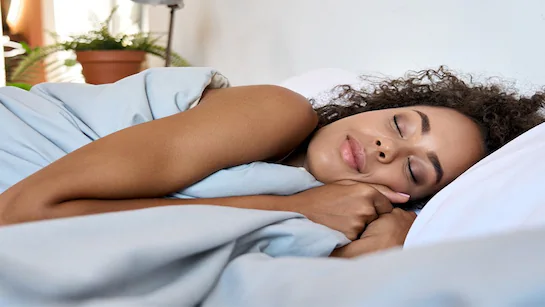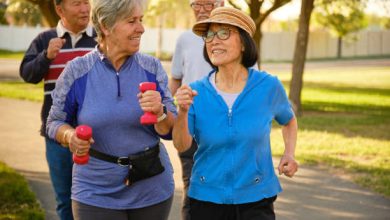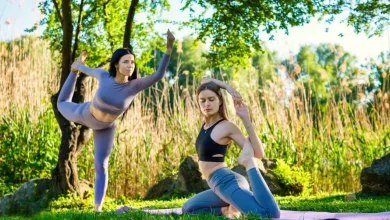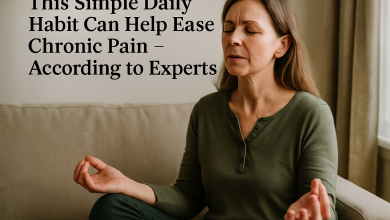Does Acupressure Help You Sleep Better? I Asked Two Experts — This Is What They Said

Sleep is essential to our physical health, mental wellbeing, and overall quality of life. Yet, millions struggle nightly with falling asleep, staying asleep, or waking up feeling unrefreshed. Amid numerous remedies and wellness trends, acupressure has gained popularity as a non-invasive, drug-free method to promote relaxation and restorative sleep.
Acupressure—rooted in Traditional Chinese Medicine (TCM)—involves applying finger or thumb pressure to specific points on the body to influence energy flow (known as qi) and restore balance. But does this ancient practice truly help people sleep better? To find out, I consulted two experts: Dr. Samantha Yeo, a sleep medicine physician, and Elaine Chen, a licensed acupressure therapist and TCM specialist. The insights they shared shed light on how acupressure works, what research supports, proper techniques, risks and precautions, and how it fits into an overall sleep-improvement strategy.
1. Understanding Acupressure and Its Theory
Traditional Chinese Medicine explains that sleep difficulties often arise from disrupted energy flow, or imbalances in yin (cool, restful energy) and yang (active energy). According to TCM, acupressure stimulates specific points to unstick energy bottlenecks (known as “blockages”), promoting smoother qi circulation throughout the body’s meridians—pathways tied to organs and functions. When qi flows harmoniously, the body can switch more easily into restful states.
“I tell my patients that acupressure is like hitting the ‘reset’ button on the nervous system,” says Dr. Samantha Yeo. “It triggers physiological relaxation that makes winding down for sleep easier.”
Elaine Chen elaborates, “When you press on key acupoints, you stimulate nerve endings, increasing blood flow and releasing tension. That, in turn, calms the mind and prepares the body for rest.”
2. What Science Says: Evidence for Acupressure and Sleep
Clinical Findings
Emerging studies suggest acupressure may improve sleep parameters—like sleep onset latency, sleep duration, and quality.
- A 2017 randomized controlled trial among cancer patients with insomnia reported that nightly acupressure for two weeks notably reduced time to fall asleep and improved overall sleep quality compared to controls.
- Another study involving older adults with sleep disturbances found similar improvements in sleep duration and subjective restfulness after daily acupressure application.
However, these studies often involve small sample sizes, and methodological rigor varies. Many rely on participant self-reporting rather than objective measures like polysomnography or actigraphy.
Expert Viewpoints
- Dr. Yeo notes that while long-term studies are limited, the short-term, low-risk nature of acupressure makes it an appealing adjunct for sleep improvement.
- Elaine Chen highlights anecdotal consistency. “Clients frequently note they fall asleep faster and “sleep more deeply” after gentle acupressure, especially when integrated into a soothing bedtime routine.”
In short, while the evidence is promising, it’s not yet conclusive—especially by Western scientific standards.
3. Which Acupoints Can Help Promote Sleep?
Both experts recommend a few widely referenced acupoints known for their calming, sleep-facilitating effects:
- HT7 (Shenmen / Spirit Gate)
- Location: At the crease of the wrist (ulnar side), aligned with the little finger.
- Benefits: Often used to relieve anxiety, agitation, and insomnia. Stimulates the heart meridian to foster emotional tranquility.
- SP6 (Sanyinjiao / Three Yin Intersection)
- Location: About three finger-widths above the inner ankle bone, just behind the shinbone.
- Benefits: Influences the spleen, liver, and kidney meridians. Commonly helps with hormonal balance, digestive calm, and relaxing the nervous system.
- KD1 (Yongquan / Gushing Spring)
- Location: On the sole of the foot, roughly a third of the way from heel to toes—where the arch is most concave.
- Benefits: Offers grounding energy, helping calm the spirit and bring the mind into focus.
- Anmian (Peaceful Sleep Point)
- Location: Just behind the ear, between the skull base and the mastoid process.
- Benefits: Used specifically to ease insomnia, reduce anxiety, and promote restful states.
Tips for Stimulating Acupoints:
- Apply firm but gentle pressure—around 30 seconds to 2 minutes per point.
- Breathe deeply during stimulation, relaxing into each exhale.
- Combine with circular or tapping motions for added relaxation.
- Use one or two points nightly rather than trying all six at once (less is often more).
Dr. Yeo emphasizes the importance of consistency: “Even a few minutes nightly can pay dividends—especially if paired with other sleep-promoting habits like limited screen time and relaxation.”
4. Precautions and Contraindications
Acupressure is generally safe, but it’s wise to observe a few caveats:
- Avoid specific areas if injured, swollen, bruised, or varicose—pressing may worsen the issue.
- Be cautious during pregnancy, notably around SP6, as it’s traditionally considered contraindicated due to potential uterine-stimulating effects.
- If you have medical conditions like diabetes (especially neuropathy), blood clotting disorders, or nerve concerns, consult your healthcare provider before applying pressure.
- Although rare, improper use may cause soreness, bruising, or aggravate a condition if applied incorrectly.
5. Acupressure vs. Acupuncture: Which Is Better?
While both stem from TCM and target similar acupoints, there are key differences:
- Acupressure: Non-invasive and self-administered, relying on fingers or tools. Ideal for occasional use, low risk, and a holistic lifestyle approach.
- Acupuncture: Involves sterile needles administered by licensed professionals. Claims stronger stimulation and deeper effects.
What the Experts Say:
- Dr. Yeo notes that acupuncture tends to be stronger, but acupressure still offers meaningful, accessible benefits, especially for those hesitant to use needles.
- Elaine Chen recommends starting with acupressure and transitioning to professional acupuncture if self-practice yields only mild improvement.
6. Integrating Acupressure into a Sleep-Enhancing Ritual
Maximizing acupressure’s sleep benefits often involves weaving it into a broader bedtime routine:
- Set a Relaxing Environment
- Dim lights, maintain a cool temperature, and minimize noise or interruptions.
- Establish a Wind-Down Protocol
- Gentle stretches, deep breathing, reading, or journaling before bed.
- Apply Acupressure Mindfully
- Pick 1–3 points that resonate. Spend 2–5 minutes total, combining pressure with slow, calming breaths.
- Pair with Other Techniques
- Try aromatherapy (e.g. lavender), soothing herbal teas, or white noise/sleep playlists.
- Consistency Over Time
- Give your body space to adapt. Changes may emerge after several nights of regular application.
According to Elaine Chen, combining acupressure with evening rituals—and deeply engaging the senses—enhances the overall neurophysiological transition from wakefulness to restfulness.
7. What Sleep Experts Say About Supplementing Acupressure
Experts in sleep care often emphasize a combination approach—not relying on a single “silver bullet” but building synergy among techniques:
- Dr. Yeo suggests coupling acupressure with cognitive-behavioral strategies (like limiting caffeine, managing light exposure, and addressing anxieties through therapy).
- Even modest sleep gains—like falling asleep 15 minutes faster—can compound over time and improve daytime functioning.
She reminds readers that if sleep struggles persist for weeks, a full sleep assessment may be warranted to rule out underlying conditions like sleep apnea or circadian disorders.
8. Real-World Perspectives: Anecdotes That Resonate
While not scientific data, user experiences underscore acupressure’s emotional and practical appeal:
- Maria, a writer in her 30s, says: “After a restless night of drafting, applying pressure on HT7 at my wrist feels like clicking a ‘pause’—my thoughts slow down, my shoulders release tension, and I’m often asleep before I know it.”
- Rahim, a retiree with arthritis, mentions: “I rub KD1 on the arch of my foot before bed. It calms the achy joints and helps quiet the mind.”
Though anecdotal, these stories illustrate how simple, tactile interventions can have subjective importance—especially when they help reinforce a calming ritual.
9. Tips for Getting Started with Ease
If you’re curious to try acupressure, here’s a beginner-friendly roadmap:
| Step | Action |
| 1. Select 1–3 Points | Choose HT7, SP6, or Anmian—they’re accessible and widely recommended. |
| 2. Before Bedtime | Begin 15–30 minutes before sleeping—after dimming lights, changing to comfy clothes, or launching a calm meditation. |
| 3. Use Comfortable Pressure | Press with your thumb or fingertip using moderate force—enough to feel the point, not pain. |
| 4. Breathe & Relax | Take five to eight long, slow breaths as you press—for around 1–2 minutes per point. |
| 5. Stay Consistent | Even if results aren’t immediate, persistence tends to yield accumulative effects. |
| 6. Track Effects | Keep a light sleep journal—how long it takes to fall asleep, how often you wake, how rested you feel. |
10. What Do the Experts Say About Expectations and Outcomes?
Dr. Yeo advises setting realistic expectations. “Many folks assume they’ll fall asleep instantly the first night. More often, acupressure gently nudges the system over several days.” She frames small, steady improvements as meaningful milestones.
Elaine Chen adds, “Acupressure is most potent when paired with intention. Approach it as a way to turn off autopilot, invite rest, and reconnect with your body’s natural rhythm.”
Conclusion
So, does acupressure help you sleep better? The answer is encouragingly “yes”—but with nuance. While scientific literature supporting acupressure for sleep is still growing, there’s compelling clinical and anecdotal evidence that strategic, gentle stimulation of specific points can ease the transition to rest, enhance sleep quality, and promote emotional calm.
Crucially, both experts agree: acupressure is best seen as one element in a holistic sleep-support strategy—not a panacea. When practiced consistently, mindfully, and in harmony with other healthy habits, it can offer meaningful—and deeply welcome—relief for many sleepers.




